The Spatial Pedigree in Traditional Villages under the Perspective of Urban Regeneration—Taking 728 Villages in Jiangnan Region, China as Cases
Abstract
:1. Introduction
1.1. Traditional Village Protection and Urban Regeneration
- (1)
- The traditional culture in urban areas like traditional villages or heritage spaces is not thoroughly understood and, therefore, insufficiently appreciated and represented in urban design, which lacks basic village spatial information.
- (2)
- Undifferentiated classification of traditional village spaces due to a lack of basic information, along with the importance of cultural conservation diversity in urban regeneration being ignored, has led to the loss of urban-village characteristics.
- (3)
- The similar reuse conservation method being used for urban regeneration in different urban-village spaces has weakened the urban cultural heritage and increases the construction consumption.
1.2. Conservation and Regeneration of Traditional Villages in Jiangnan Region, China
1.3. Literature Review
1.3.1. Pedigree Construction of Traditional Village Space
1.3.2. Research on Village Spatial Visualization Using GIS and BIM as Tools
- (1)
- Obtained the village spatial information in the isolate areas of the Jiangnan region, and established a village database, which used for the digital management of village conservation.
- (2)
- Established the model working path between ArcGIS and BIM, completed built 3D village model though 2D spatial information, which can be used for the visualization of village protection;
- (3)
- Established criterion framework can be command in ArcGIS to identify village spatial classifications and construct pedigree.
- (4)
- Village pedigree presents the types and the cross-correlation between multiple villages, and the similarities and differences of village types can be inspired for urban-village conservation and reuse.
2. Materials
2.1. Research Area
2.2. Data Sources
- (1)
- Village name, address, and basic information data for this paper come from the Ministry of Housing and Urban-Rural Development of the People’s Republic of China and the Research Center for the Protection and Development of Chinese Traditional Villages [56,57]. The satellite map and map data are from the BIGEMAP high-definition satellite map resource library. The scale of the illustration is 1:1, which can clearly identify the scale, outline, and location of the village, and can be adjusted to match the pedigree.
- (2)
- Qualitative data such as the history, culture, social form, and ethnic customs of the village are derived from the village annals, local chronicles, and other village books, and are obtained through field investigations. The time span is from the Tang Dynasties to 2022.
- (3)
- The physical space forms such as village outline boundary, village roads, architectural style, etc., are obtained by on-site surveying, survey and draw, and the scale is 1:1. The scale of the village picture can be adjusted according to the situation. Other materials that cannot be obtained directly from books or official websites can be obtained through field research or interviews with villagers, such as local legends, population changes, etc.
3. Method
3.1. Spatial Data Processing
3.1.1. On-Site Investigation
3.1.2. Label Village Space and Build Village Model
3.2. Classified Criterion to Recognize the Traditional Village Spatial Pedigree
3.2.1. Nearest Neighbor Index (NNI)
3.2.2. Kernel Density Estimation (KDE)
3.2.3. Classified Criterion by Spatial Overlay Analysis (SOA)
3.3. Construct and Visualize Spatial Pedigree
4. Results
4.1. Village Spatial Aggregation Patterns and Influencing Factors
4.1.1. Aggregation Patterns
4.1.2. Influencing Factors
4.2. Traditional Village Spatial Environment Pedigree
4.2.1. Water System Pedigree
4.2.2. Mountain System Pedigree
4.2.3. Water with Mountain System Pedigree
4.3. Traditional Village Spatial Organization Pedigree
4.3.1. Centripetal Aggregation Pedigree
4.3.2. Net Radial Pedigree
4.3.3. Random Scatter Pedigree
4.4. Traditional Village Spatial Morphological Pedigree
4.4.1. Regular Form
4.4.2. Irregular Form
- (1)
- Freestyle form: The spatial form of the village expands along the surrounding mountains, water systems, and road network space with the expansion of the population, forming a random free form. The extension form of space is flexible and full of rhythmic changes, while the spatial morphology of the village is based on natural landforms and is assembled and arranged flexibly under the invisible blood ties.
- (2)
- Scatter-point form: This form is divided into three sub-types, including two-point form, three-point form, and multipoint form. The villages are dispersed in different landforms in the Jiangnan region. In terms of the severe terrain within the village area, village space is distributed unconsciously. Therefore, the village space is scattered in the flat area for construction by one or several units, forming the scattered form.
- (3)
- Banding form: These villages are morphologically banded, forming two subtypes, including straight banding form and curvilinear banding form. The straight banding form extends along both sides of a main street or river, and the street layout is connected by one or two main street axes running through the space. The village plan is arranged in a straight line along the winding streets, highlighting the directness and penetration of the banding shape. The curvilinear banding forms a spatial banding-shape for the village layout to spread along the parallel contour lines of the mountains. The form of village space presents a changeable line, and the depth is arbitrary. It is built by craftsmen according to the need of the villagers, forming a multi-level linear extension.
4.4.3. Artistic Form
4.5. Traditional Village Architectural Form Pedigree
4.5.1. Architectural Form
4.5.2. Architectural Group Form
5. Discussion
5.1. On-Site Mapping and 3D Modeling Application of Traditional Village Space
5.2. Classification of Jiangnan Traditional Village Space in Pedigree
5.3. The Application of Traditional Village Pedigree for Urban Regeneration
6. Conclusions and Ongoing Research
Author Contributions
Funding
Acknowledgments
Conflicts of Interest
Appendix A
| Lu Zhong Village | Shi She Village | Dong Ziguan Village |
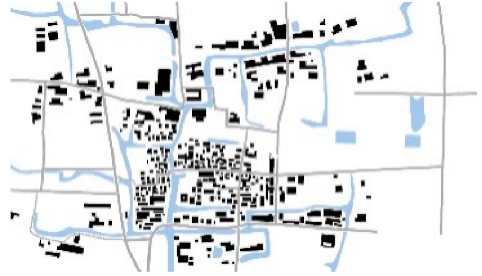 | 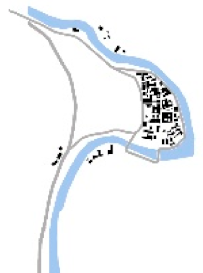 |  |
| Huang Xu Village | Da Di Village | Ling Shan Village |
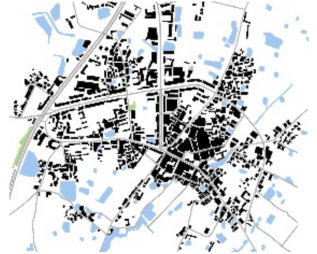 | 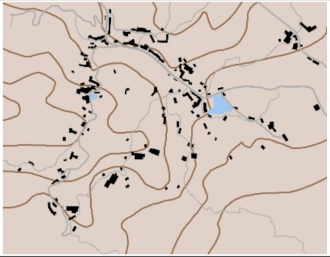 | 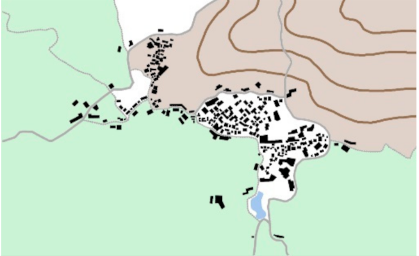 |
| Mu Ligong Village | Yang Chan Village | Lun Tan Village |
 | 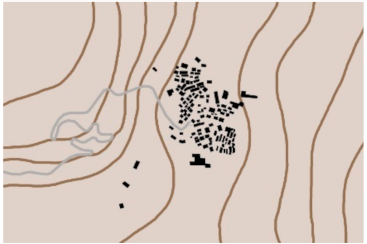 | 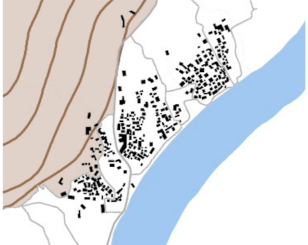 |
| Xiu Li Village | Guang Ji Village | Ji Dong Village |
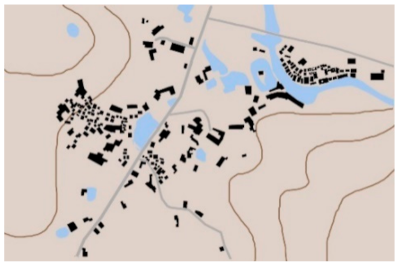 | 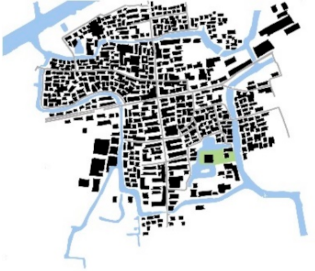 | 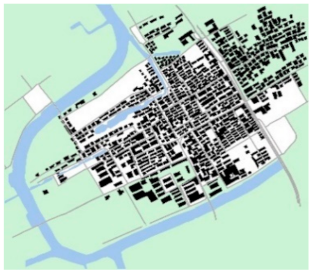 |
| Shu Yuan Village | Weng Xiang Village | Hong Ni Mountain Village |
 |  |  |
| Shui Chuan Village | Mei Zhu Village | Rao Nan Village |
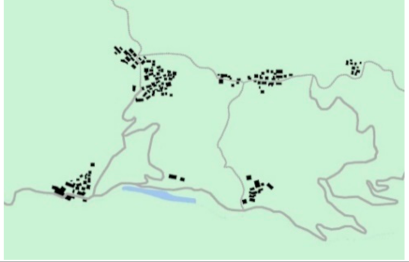 |  | 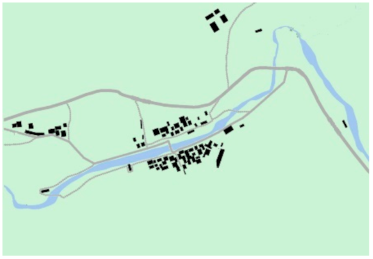 |
| Ruo Dai Village | Xiang Chang Village | Up River Village |
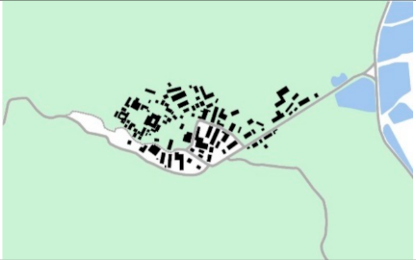 | 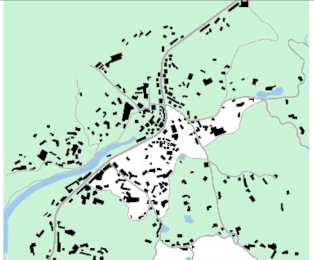 |  |
| San Xin Village | San Shan Village | Mei Rong Village |
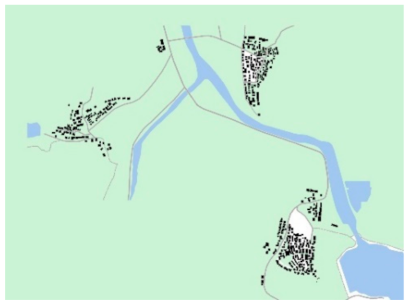 | 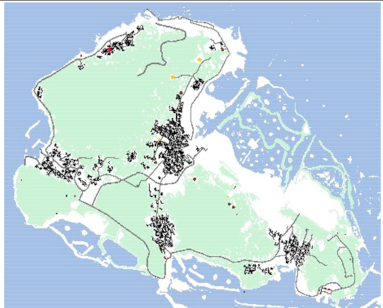 |  |
| Hu Ri Village | Two Leaves Village | The Eight Diagrams Village |
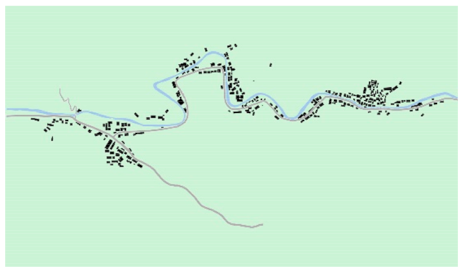 | 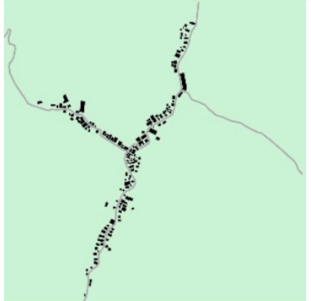 | 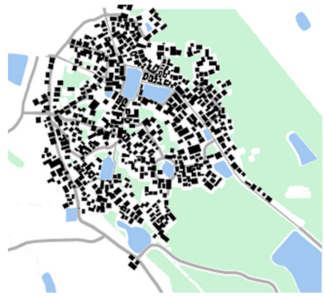 |
| Hong Village | Qi Ling Village | Pu Xin Village |
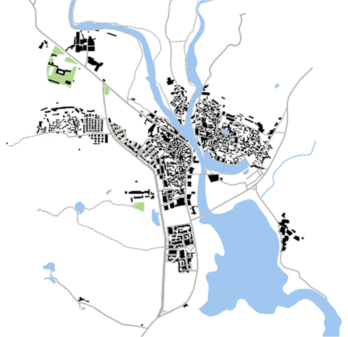 | 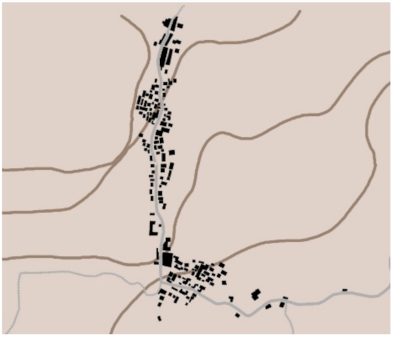 | 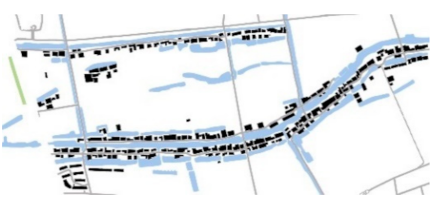 |
| Yang Qiao Village | Zhen River Village | Dai Jiashan Village |
 | 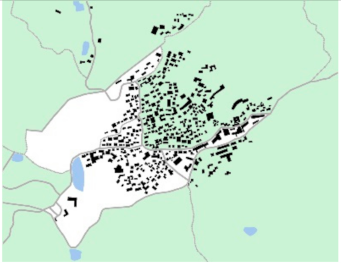 | 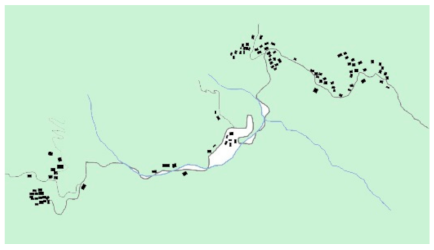 |
Appendix B
| Level | Macro Level | Meso Level | ||||||||||||
|---|---|---|---|---|---|---|---|---|---|---|---|---|---|---|
| Research Object | Influencing Factors | The Criterion Framework for Traditional Village Spatial Environment Pedigree | ||||||||||||
| Prototype | Mountain System Pedigree | Water System Pedigree | Water With Mountain System Pedigree | |||||||||||
| Sub-Types | Mountain Surround the Village | Village Sprawl Mountainside | Village Entrenched on the Ridge | Village Scattered Among the Mountains | Water Cross the Village | Water Surround the Village | Water Face the Village | Water Scatter in the Village | Village Face Water and Rely Mountains | Village Scattered Among the Water with Mountains | ||||
| Criterion 1 | Elevation | Terrain elements | relationship with mountains | mountain surround | ✓ | 🗴 | 🗴 | 🗴 | 🗴 | 🗴 | 🗴 | 🗴 | ✓ | ✓ |
| village sprawl in | 🗴 | ✓ | 🗴 | 🗴 | 🗴 | 🗴 | 🗴 | 🗴 | 🗴 | 🗴 | ||||
| village with ridge | 🗴 | 🗴 | ✓ | 🗴 | 🗴 | 🗴 | 🗴 | 🗴 | 🗴 | 🗴 | ||||
| village scattered in | 🗴 | 🗴 | 🗴 | ✓ | 🗴 | 🗴 | 🗴 | 🗴 | 🗴 | 🗴 | ||||
| Criterion 2 | Water system | Water elements | relationship with water | water cross | 🗴 | 🗴 | 🗴 | 🗴 | ✓ | 🗴 | 🗴 | 🗴 | 🗴 | 🗴 |
| water surround | 🗴 | 🗴 | 🗴 | 🗴 | 🗴 | ✓ | 🗴 | 🗴 | 🗴 | 🗴 | ||||
| water face to village | 🗴 | 🗴 | 🗴 | 🗴 | 🗴 | 🗴 | ✓ | 🗴 | ✓ | 🗴 | ||||
| water scatter | 🗴 | 🗴 | 🗴 | 🗴 | 🗴 | 🗴 | 🗴 | ✓ | 🗴 | ✓ | ||||
| Criterion 3 | Road system | Road elements | relationship with road | Built depend on mountain | ✓ | ✓ | ✓ | ✓ | 🗴 | 🗴 | 🗴 | 🗴 | 🗴 | 🗴 |
| Built depend on river | 🗴 | 🗴 | 🗴 | 🗴 | ✓ | ✓ | ✓ | ✓ | 🗴 | 🗴 | ||||
| Built depend on river with mountain | 🗴 | 🗴 | 🗴 | 🗴 | 🗴 | 🗴 | 🗴 | 🗴 | ✓ | ✓ | ||||
| Criterion X (X ≥ 3) | Other qualitative factors | _______ | ||||||||||||
| Level | Macro Level | Meso Level | ||||||||
|---|---|---|---|---|---|---|---|---|---|---|
| Research Object | Influencing Factors | Appendix B-2 The Criterion Framework for Traditional Village Spatial Organization Pedigree | ||||||||
| Prototype | Centripetal Aggregation Pedigree | Net Radial Pedigree | Random Scatter Pedigree | |||||||
| Sub-Types | Ordered Single-Center Aggregation | Ordered Multi-Center Aggregation | Disordered Single-Center Aggregation | Disordered Multi-Center Aggregation | ||||||
| Criterion 1 | Elevation | Terrain features | plain | ✓ | ✓ | 🗴 | 🗴 | 🗴 | 🗴 | |
| non-plain | 🗴 | 🗴 | ✓ | ✓ | ✓ | ✓ | ||||
| Village architecture group | Number of village architecture group | 0 | 🗴 | 🗴 | 🗴 | 🗴 | 🗴 | ✓ | ||
| >3 | 🗴 | 🗴 | 🗴 | 🗴 | ✓ | 🗴 | ||||
| The number of architecture units in the group > 2 | 🗴 | 🗴 | 🗴 | ✓ | 🗴 | 🗴 | ||||
| Criterion 2 | Water system | Water system style | Village axis | Show a straight axis that coincides with the street | ✓ | ✓ | 🗴 | 🗴 | 🗴 | 🗴 |
| Show a tortuous axis that does not necessarily coincide with the street | 🗴 | 🗴 | ✓ | ✓ | 🗴 | ✓ | ||||
| No axis | 🗴 | 🗴 | 🗴 | 🗴 | ✓ | 🗴 | ||||
| Criterion 3 | Road system | Road system style | Public space elements coincide with road nodes | ✓ | ✓ | ✓ | ✓ | 🗴 | 🗴 | |
| Shape | straight | ✓ | ✓ | 🗴 | 🗴 | 🗴 | 🗴 | |||
| changeable | 🗴 | 🗴 | ✓ | ✓ | ✓ | ✓ | ||||
| Criterion X (X ≥ 3) | Other qualitative factors | Public space elements are used for village’s daily activities and gathering centers (including squares, ancestral halls, temples, ancient trees, ancient wells, etc.). | Number of public space elements | 0 | 🗴 | 🗴 | 🗴 | 🗴 | ✓ | 🗴 |
| 1 | ✓ | 🗴 | ✓ | 🗴 | 🗴 | ✓ | ||||
| >1 | 🗴 | ✓ | 🗴 | ✓ | 🗴 | ✓ | ||||
| Clusters of buildings are formed around the elements | ✓ | ✓ | ✓ | ✓ | 🗴 | 🗴 | ||||
| The number of users > 50% of the total number of villagers | ✓ | ✓ | ✓ | ✓ | 🗴 | 🗴 | ||||
| 15 min walking service radius | ✓ | ✓ | ✓ | 🗴 | 🗴 | 🗴 | ||||
| Macro Level | Meso Level | ||||||||||
|---|---|---|---|---|---|---|---|---|---|---|---|
| Influencing Factors | Appendix B-3 The Criterion Framework for Traditional Village Spatial Morphological Pedigree | ||||||||||
| Prototype | Regular Form | Irregular Form | Artistic Image Form | ||||||||
| Sub-Types | Polygon Form | Round/Oval Form | Sector Form | Freestyle Form | Scatter-Point Form | Banding Form | Object Imaginative Art | Animal Imaginative Art | |||
| Elevation | Village outline boundary style | Geometric shape | Polygon | ✓ | 🗴 | 🗴 | 🗴 | 🗴 | 🗴 | 🗴 | 🗴 |
| Round/oval | 🗴 | ✓ | 🗴 | 🗴 | 🗴 | 🗴 | 🗴 | 🗴 | |||
| Sector | 🗴 | 🗴 | ✓ | 🗴 | 🗴 | 🗴 | 🗴 | 🗴 | |||
| Number of village space unit | 1 | ✓ | ✓ | ✓ | ✓ | 🗴 | ✓ | ✓ | 🗴 | ||
| >2 | 🗴 | 🗴 | 🗴 | 🗴 | ✓ | 🗴 | 🗴 | ✓ | |||
| Water system | Water system style | Village axis | Show a straight axis that coincides with the water system | ✓ | 🗴 | ✓ | 🗴 | 🗴 | ✓ | 🗴 | 🗴 |
| Show a tortuous axis that does not necessarily coincide with the water system | 🗴 | ✓ | 🗴 | ✓ | 🗴 | 🗴 | ✓ | ✓ | |||
| No axis | 🗴 | 🗴 | 🗴 | 🗴 | ✓ | 🗴 | 🗴 | 🗴 | |||
| Road system | Village road style | Straight | ✓ | 🗴 | 🗴 | 🗴 | 🗴 | ✓ | 🗴 | 🗴 | |
| Sector angle | 🗴 | 🗴 | ✓ | 🗴 | 🗴 | 🗴 | 🗴 | 🗴 | |||
| Curved like S | 🗴 | 🗴 | 🗴 | 🗴 | 🗴 | ✓ | 🗴 | 🗴 | |||
| Cross like X | 🗴 | 🗴 | 🗴 | 🗴 | 🗴 | ✓ | 🗴 | 🗴 | |||
| Changeable like the net | 🗴 | 🗴 | 🗴 | ✓ | ✓ | 🗴 | ✓ | ✓ | |||
| Other qualitative factors | Feng shui planning principles | ✓ | ✓ | ✓ | ✓ | 🗴 | 🗴 | ✓ | ✓ | ||
| Local art worship | 🗴 | 🗴 | 🗴 | 🗴 | 🗴 | 🗴 | ✓ | ✓ | |||
| Artistic spatial form interpretation of official documents | ✓ | ✓ | ✓ | 🗴 | 🗴 | 🗴 | ✓ | ✓ | |||
| Level | Research Object | Criterion 1 | Criterion 2 | Criterion 3 | Criterion 4 | |||||||||||||||||
|---|---|---|---|---|---|---|---|---|---|---|---|---|---|---|---|---|---|---|---|---|---|---|
| Macro Level | Influencing Factors | Elevation | Water System | Road System | Other Qualitative Factors | |||||||||||||||||
| Micro level | Appendix B-4 The Criterion Framework for Traditional Village Architectural Form Pedigree | Prototype | Sub-types | Area | relationship with water | relationship with road | Architecture elements | |||||||||||||||
| Shanghai | Jiangsu | Anhui | Jiangxi | Zhejiang | near | front | cross | beside | slope | number of courtyards | garden | western elements | Hui-style elements | bark | Multi-way and wall | corridors | ||||||
| 1 | 2 | ≥3 | ||||||||||||||||||||
| Shanghai residence | Near-water residence | ✓ | 🗴 | 🗴 | 🗴 | 🗴 | ✓ | 🗴 | 🗴 | 🗴 | 🗴 | 🗴 | 🗴 | 🗴 | 🗴 | 🗴 | 🗴 | 🗴 | 🗴 | 🗴 | ||
| Street-beside residence | ✓ | 🗴 | 🗴 | 🗴 | 🗴 | 🗴 | 🗴 | 🗴 | ✓ | 🗴 | 🗴 | 🗴 | 🗴 | 🗴 | 🗴 | 🗴 | 🗴 | 🗴 | 🗴 | |||
| Courtyard residence | ✓ | 🗴 | 🗴 | 🗴 | 🗴 | 🗴 | 🗴 | 🗴 | 🗴 | 🗴 | ✓ | 🗴 | 🗴 | 🗴 | 🗴 | 🗴 | 🗴 | 🗴 | 🗴 | |||
| Chinese and Western combined residence | ✓ | 🗴 | 🗴 | 🗴 | 🗴 | 🗴 | 🗴 | 🗴 | 🗴 | 🗴 | 🗴 | 🗴 | 🗴 | 🗴 | ✓ | 🗴 | 🗴 | 🗴 | 🗴 | |||
| Modern garden house | ✓ | 🗴 | 🗴 | 🗴 | 🗴 | 🗴 | 🗴 | 🗴 | 🗴 | 🗴 | 🗴 | 🗴 | 🗴 | ✓ | 🗴 | 🗴 | 🗴 | 🗴 | 🗴 | |||
| Southern Jiangsu residence | Waterfront residence | 🗴 | ✓ | 🗴 | 🗴 | 🗴 | 🗴 | ✓ | 🗴 | 🗴 | 🗴 | 🗴 | 🗴 | 🗴 | 🗴 | 🗴 | 🗴 | 🗴 | 🗴 | 🗴 | ||
| Single-family residence | 🗴 | ✓ | 🗴 | 🗴 | 🗴 | 🗴 | 🗴 | 🗴 | ✓ | 🗴 | 🗴 | 🗴 | 🗴 | 🗴 | 🗴 | 🗴 | 🗴 | 🗴 | 🗴 | |||
| Cross-water residence | 🗴 | ✓ | 🗴 | 🗴 | 🗴 | 🗴 | 🗴 | ✓ | 🗴 | 🗴 | 🗴 | 🗴 | 🗴 | 🗴 | 🗴 | 🗴 | 🗴 | 🗴 | 🗴 | |||
| Multi-way multi-entry residence | 🗴 | ✓ | 🗴 | 🗴 | 🗴 | 🗴 | 🗴 | 🗴 | 🗴 | 🗴 | 🗴 | 🗴 | 🗴 | 🗴 | 🗴 | 🗴 | 🗴 | ✓ | 🗴 | |||
| Garden residence | 🗴 | ✓ | 🗴 | 🗴 | 🗴 | 🗴 | 🗴 | 🗴 | 🗴 | 🗴 | 🗴 | 🗴 | 🗴 | ✓ | 🗴 | 🗴 | 🗴 | 🗴 | 🗴 | |||
| Chinese and Western combined residence | 🗴 | ✓ | 🗴 | 🗴 | 🗴 | 🗴 | 🗴 | 🗴 | 🗴 | 🗴 | 🗴 | 🗴 | 🗴 | 🗴 | ✓ | 🗴 | 🗴 | 🗴 | 🗴 | |||
| Southern Anhui residence Northeast Jiangxi | Bark residence | 🗴 | 🗴 | ✓ | 🗴 | 🗴 | 🗴 | 🗴 | 🗴 | 🗴 | 🗴 | 🗴 | 🗴 | 🗴 | 🗴 | 🗴 | 🗴 | ✓ | 🗴 | 🗴 | ||
| Stone residence | 🗴 | 🗴 | v | 🗴 | 🗴 | 🗴 | 🗴 | 🗴 | 🗴 | ✓ | 🗴 | 🗴 | 🗴 | 🗴 | 🗴 | 🗴 | 🗴 | 🗴 | 🗴 | |||
| Earth wall residence | 🗴 | 🗴 | ✓ | 🗴 | 🗴 | 🗴 | 🗴 | 🗴 | 🗴 | 🗴 | 🗴 | 🗴 | 🗴 | 🗴 | 🗴 | 🗴 | 🗴 | ✓ | 🗴 | |||
| Hui-style residence | 🗴 | 🗴 | ✓ | 🗴 | 🗴 | 🗴 | 🗴 | 🗴 | 🗴 | 🗴 | 🗴 | 🗴 | 🗴 | 🗴 | 🗴 | ✓ | 🗴 | 🗴 | 🗴 | |||
| Waterfront residence | 🗴 | 🗴 | 🗴 | ✓ | 🗴 | 🗴 | ✓ | 🗴 | 🗴 | 🗴 | 🗴 | 🗴 | 🗴 | 🗴 | 🗴 | 🗴 | 🗴 | 🗴 | 🗴 | |||
| Slope residence | 🗴 | 🗴 | 🗴 | ✓ | 🗴 | 🗴 | 🗴 | 🗴 | 🗴 | ✓ | 🗴 | 🗴 | 🗴 | 🗴 | 🗴 | 🗴 | 🗴 | 🗴 | 🗴 | |||
| Courtyard residence | 🗴 | 🗴 | 🗴 | ✓ | 🗴 | 🗴 | 🗴 | 🗴 | 🗴 | 🗴 | ✓ | 🗴 | 🗴 | 🗴 | 🗴 | 🗴 | 🗴 | 🗴 | 🗴 | |||
| Hui-style residence | 🗴 | 🗴 | 🗴 | ✓ | 🗴 | 🗴 | 🗴 | 🗴 | 🗴 | 🗴 | 🗴 | 🗴 | 🗴 | 🗴 | 🗴 | ✓ | 🗴 | 🗴 | 🗴 | |||
| Horse head wall | 🗴 | 🗴 | 🗴 | ✓ | 🗴 | 🗴 | 🗴 | 🗴 | 🗴 | 🗴 | 🗴 | 🗴 | 🗴 | 🗴 | 🗴 | 🗴 | 🗴 | ✓ | 🗴 | |||
| Northeast Zhejiang residence | Water town residence | 🗴 | 🗴 | 🗴 | 🗴 | ✓ | ✓ | 🗴 | 🗴 | 🗴 | 🗴 | 🗴 | 🗴 | 🗴 | 🗴 | 🗴 | 🗴 | 🗴 | 🗴 | 🗴 | ||
| Hangzhou style residence | 🗴 | 🗴 | 🗴 | 🗴 | ✓ | 🗴 | 🗴 | 🗴 | 🗴 | 🗴 | 🗴 | 🗴 | 🗴 | 🗴 | 🗴 | 🗴 | 🗴 | 🗴 | ✓ | |||
| Garden style residence | 🗴 | 🗴 | 🗴 | 🗴 | ✓ | 🗴 | 🗴 | 🗴 | 🗴 | 🗴 | ✓ | 🗴 | 🗴 | 🗴 | 🗴 | 🗴 | 🗴 | 🗴 | 🗴 | |||
| Three pushes nine Mingtang | 🗴 | 🗴 | 🗴 | 🗴 | ✓ | 🗴 | 🗴 | 🗴 | 🗴 | 🗴 | 🗴 | ✓ | 🗴 | 🗴 | 🗴 | 🗴 | 🗴 | ✓ | 🗴 | |||
| New big wall door | 🗴 | 🗴 | 🗴 | 🗴 | ✓ | 🗴 | 🗴 | 🗴 | 🗴 | 🗴 | 🗴 | 🗴 | 🗴 | ✓ | 🗴 | 🗴 | ✓ | 🗴 | ||||
| Taimen | 🗴 | 🗴 | 🗴 | 🗴 | ✓ | 🗴 | 🗴 | 🗴 | 🗴 | 🗴 | 🗴 | 🗴 | ✓ | 🗴 | 🗴 | 🗴 | 🗴 | 🗴 | ||||
| Large wall door | 🗴 | 🗴 | 🗴 | 🗴 | ✓ | 🗴 | 🗴 | 🗴 | 🗴 | 🗴 | ✓ | 🗴 | 🗴 | 🗴 | 🗴 | 🗴 | ✓ | 🗴 | ||||
| Inter-alley pavilion | 🗴 | 🗴 | 🗴 | 🗴 | ✓ | 🗴 | 🗴 | 🗴 | 🗴 | 🗴 | 🗴 | 🗴 | 🗴 | 🗴 | 🗴 | 🗴 | 🗴 | ✓ | 🗴 | |||
| Walk the horse | 🗴 | 🗴 | 🗴 | 🗴 | ✓ | 🗴 | 🗴 | 🗴 | 🗴 | 🗴 | 🗴 | 🗴 | 🗴 | 🗴 | 🗴 | ✓ | 🗴 | 🗴 | 🗴 | |||
| Eighteen Floor | 🗴 | 🗴 | 🗴 | 🗴 | ✓ | 🗴 | 🗴 | 🗴 | 🗴 | 🗴 | 🗴 | ✓ | 🗴 | 🗴 | 🗴 | 🗴 | 🗴 | 🗴 | ||||
References
- Lin, L.; Xue, D.; Yu, Y. Reconfiguration of Cultural Resources for Tourism in Urban Villages—A Case Study of Huangpu Ancient Village in Guangzhou. Land 2022, 11, 563–584. [Google Scholar] [CrossRef]
- Tong, M.; Bai, X.; Jiang, J. Organic Ideas, Organic Cities and Organic Regeneration. Time Archit. 2021, 4, 50–58. [Google Scholar]
- Liu, C.X.M. Characteristics and Influencing Factors on the Hollowing of Traditional Villages—Taking 2645 Villages from the Chinese Traditional Village Catalogue (Batch 5) as an Example. Int. J. Environ. Res. Public Health 2021, 18, 12759–12778. [Google Scholar] [CrossRef]
- Liu, Q.; Liao, Z.; Wu, Y.; Degefu, D.M. Cultural Sustainability and Vitality of Chinese Vernacular Architecture : A Pedigree for the Spatial Art of Traditional Villages in Jiangnan Region As. Sustainability 2019, 11, 6898. [Google Scholar] [CrossRef]
- Yan, Y.U. Survival and Protection of Traditional Chinese Villages in the Context of Urbanization. Asian Agric. Res. 2017, 4, 26–28. [Google Scholar]
- Zhang, T.; Xu, H.; Wang, C. Self-Adaptability and Topological Deformation of Ganlan Architectural Heritage: Conservation and Regeneration of Lianghekou Tujia Village in Western Hubei, China. Front. Archit. Res. 2022, 5, 1–12. [Google Scholar] [CrossRef]
- Liao, F.; Pan, H.; Zhang, J. Application of BIM Technology in the Design of Prefabricated Architecture. IOP Conf. Ser. Earth Environ. Sci. 2021, 760, 012005. [Google Scholar] [CrossRef]
- Wei, J.; Li, N.; Sai, Y. Research on the Construction of Spatial Gene Pedigree of Miao Traditional Villages in Western Hunan. Chinese Overseas Archit. 2022, 4, 65–70. [Google Scholar]
- Zheng, W.; Tian, M.; Jiang, S. Landscape Gene Identification and Pedigree Construction of Zhuang Traditional Settlements in Mountainous Area of Northern Guangxi. Landscape 2021, 6, 32–39. [Google Scholar]
- Hu, Z.; Strobl, J.; Min, Q.; Tan, M.; Chen, F. Visualizing the Cultural Landscape Gene of Traditional Settlements in China: A Semiotic Perspective. Herit. Sci. 2021, 9, 115. [Google Scholar] [CrossRef]
- Qing, C. Structure and Prospective of Chinese Vernacular Architectural Pedigrees An Objective Based on a Systematic Study of Sample Preservation and Holistic Regeneration. Archit. J. 2016, 10, 1–9. [Google Scholar]
- Luo, Y. Value Analysis and Protective Planning of Famous Historical and Cultural Villages: A Case Study of Ancient Sangyuan Village in Jishui County, Jiangxi Province. J. Landsc. Res. 2016, 8, 123–126. [Google Scholar]
- Verdini, G.; Frassoldati, F.; Nolf, C. Reframing China’s Heritage Conservation Discourse. Learning by Testing Civic Engagement Tools in a Historic Rural Village. Int. J. Herit. Stud. 2017, 23, 317–334. [Google Scholar] [CrossRef]
- Ge, J.; Lu, J.; Wu, J.; Luo, X.; Shen, F. Suitable and Energy-Saving Retrofit Technology Research in Traditional Wooden Houses in Jiangnan, South China. J. Build. Eng. 2022, 45, 103550–103570. [Google Scholar] [CrossRef]
- Chen, C.; Gao, J.; Chen, J. Behavioral Logics of Local Actors Enrolled in the Restructuring of Rural China: A Case Study of Haoqiao Village in Northern Jiangsu. J. Rural Stud. 2022, 93, 223–233. [Google Scholar] [CrossRef]
- Liu, S. Research on Cultural Resources in Jiangnan Region; BaiHuaZhou literature and Art Publishing Press: NanChang, China, 2022. [Google Scholar]
- Chinese Traditional Villages Preservation and Development Study Center. Available online: http://www.chuantongcunluo.com/ (accessed on 19 July 2022).
- Huang Yajuan, W.D. Analysis of the Current Situation and Problems of the Development of Traditional Villages in the Jiangnan Region. Rural Technol. 2020, 13, 30–31. [Google Scholar]
- Yang, J.; Yang, L.; Ma, H. Community Participation Strategy for Sustainable Urban Regeneration in Xiamen, China. Land 2022, 11, 600. [Google Scholar] [CrossRef]
- Xiangyang, B. Social Morphology-The Knowledge Pedigree of Human Ecology and the Path Choice of “Sociology Sinicization; Shanghai University: Shanghai, China, 2021. [Google Scholar]
- Nietzsche, F.W. Genealogy of Morals; Neeland Media LLC: Overland Park, KS, USA, 2022. [Google Scholar]
- Rockhill, G. Foucault, Genealogy, Counter-History; Rockhill, G., Ed.; Theory & Event: Milwaukee, WI, USA, 2020. [Google Scholar]
- Reginster, B. The Will to Nothingness: An Essay on Nietzsche’s on the Genealogy of Morality; Oxford University Press: London, UK, 2021. [Google Scholar]
- Loren–Méndez, M. Architecture without Architects: A Short Introduction to Non-Pedigreed Architecture. Rev. Proy. Progreso, Arquit. 2018, 18, 120–121. [Google Scholar]
- WANGFatang, W.J. The Poetic Historiography A Book Review of The Historiography of Modern Architecture. Archit. J. 2018, 12, 112–117. [Google Scholar]
- Whitehand, J.; Gu, K. Urban Conservation in China: Historical Development, Current Practice and Morphological Approach Urban Conservation in China Historical Development, Current Practice and Morphological Approach. Town Plan. Rev. 2019, 78, 643–670. [Google Scholar] [CrossRef]
- Bo, C. The Pedigree of the House: The Case of Vdra-Ba. HAU J. Ethnogr. Theory 2022, 12, 109–125. [Google Scholar]
- Chang, J.-H. Review: A Genealogy Tropical Architecture: Colonial Networks, Nature and Technoscience. J. Soc. Archit. Hist. 2017, 75, 551–554. [Google Scholar]
- Cheng Shizhuo, L.S. Reserch on the Native Elements of the British Architectural Technology Aesthetic Pedigree. Archit. J. 2013, S2, 116–119. [Google Scholar]
- Philippou, P. Cultural Buildings’ Genealogy of Originality: The Individual, the Unique and the Singular. J. Archit. 2015, 20, 1032–1066. [Google Scholar] [CrossRef]
- Zhou, Y. Pedigree and Spatial Analysis of Zhe-Style Vernacular Architecture. Herit. Archit. 2022, 1, 2–17. [Google Scholar]
- Xiao, Y. Regional Genealogy The Evolution of Lingnan Region Modern Architecture. Time Archit. 2015, 5, 64–69. [Google Scholar]
- Liu, T.H.; Butler, R.J.; Zhang, C.Y. Evaluation of Public Perceptions of Authenticity of Urban Heritage under the Conservation Paradigm of Historic Urban Landscape—A Case Study of the Five Avenues Historic District in Tianjin, China. J. Archit. Conserv. 2019, 26, 228–251. [Google Scholar] [CrossRef]
- van Eck, C. The Style Empire and Its Pedigree: Piranesi, Pompeii and Alexandria. Archit. Hist. 2018, 6, 1–16. [Google Scholar] [CrossRef]
- Yacobi, H.S.H. The Arab Village: A Genealogy of (Post)Colonial Imagination. J. Archit. 2014, 19, 975–997. [Google Scholar] [CrossRef]
- Luo, D. The Establishment of Chinese Traditional Villages. J. World Archit. 2014, 006, 104–107. [Google Scholar]
- Statuto, D.; Cillis, G.; Picuno, P. GIS-Based Analysis of Temporal Evolution of Rural Landscape: A Case Study in Southern Italy. Nat Resour Res 2019, 28, 61–75. [Google Scholar] [CrossRef]
- Ma, H.; Tong, Y. Spatial Differentiation of Traditional Villages Using ArcGIS and GeoDa: A Case Study of Southwest China. Ecol. Inform. 2022, 68, 101416. [Google Scholar] [CrossRef]
- Yang, Q.; Zhang, F.; An, Y.; Sun, C.; Wu, J.; Zhang, Y.; Wei, Z. Research on the Spatial Distribution Pattern and Influencing Factors of China’s Antipoverty (Pro-Poor Tourism) on GIS. Discret. Dyn. Nat. Soc. 2021, 2021, 1–11. [Google Scholar] [CrossRef]
- Hewitt, R.J.; Pera, F.A.; García-Martín, M.; Gaudry-Sada, K.-H.; Hernández-Jiménez, V.; Bieling, C. Mapping Adolescents’ Sense of Place and Perceptions of Change in an Urban–Rural Transition Area. Environ. Manag. 2020, 65, 334–354. [Google Scholar] [CrossRef]
- Nieto Masot, A.; Cardenas Alonso, G.; Engelmo Moriche, A. Spatial Analysis of the Rural-Urban Structure of the Spanish Municipalities. Int. J. Geo-Inf. 2020, 9, 213. [Google Scholar] [CrossRef] [Green Version]
- Fu, J.; Zhou, J.; Deng, Y. Heritage Values of Ancient Vernacular Residences in Traditional Villages in Western Hunan, China: Spatial Patterns and Influencing Factors. Build. Environ. 2021, 188, 107473. [Google Scholar] [CrossRef]
- Chaudhari, R.H.; Ishaq, B.N.; Gawali, B.W. Web Based GIS Village Information System: A Review; Springer: Singapore, 2022. [Google Scholar]
- Lin, G.; Giordano, A.; Sang, K. From site survey to hbim model for the documentation of historic buildings: The case study of hexinwu village in china. Conserv. Sci. Cult. Herit. 2021, 20, 111–123. [Google Scholar]
- Zheng, G.H.; Jiang, D.F.; Luan, Y.F.; Yao, Y. GIS-Based Spatial Differentiation of Ethnic Minority Villages in Guizhou Province, China. J. Mt. Sci. 2022, 19, 987–1000. [Google Scholar] [CrossRef]
- Han, G.S.Z. GIS Spatial Analysis Method for Urban and Rural Planning; Science Press: Beijing, China, 2018. [Google Scholar]
- Li, S. Spatial and Temporal Distribution Characteristics of Traditional Villages and Integration Model of Culture and Tourism in Shandong Province. Ludong Univ. J. Nat. Sci. Ed. 2021, 4, 358–365. [Google Scholar]
- Jiang, Y.; Long, H.; Tang, Y.; Deng, W.; Chen, K.; Zheng, Y. The Impact of Land Consolidation on Rural Vitalization at Village Level: A Case Study of a Chinese Village. J. Rural Stud. 2021, 86, 485–496. [Google Scholar] [CrossRef]
- Chen, B. Sensitivity Evaluation of Rural Revitalization Regional Development Based on GIS: Taking Minglun Town, Huanjiang Maonan Autonomous County, Guangxi as an Example. South L. Resour. 2020, 39, 59–62. [Google Scholar]
- Chen, B.; Feng, Q.; Niu, B.; Yan, F.; Gao, B.; Yang, J.; Gong, J.; Liu, J. Multi-Modal Fusion of Satellite and Street-View Images for Urban Village Classification Based on a Dual-Branch Deep Neural Network. Int. J. Appl. Earth Obs. Geoinf. 2022, 109, 102794. [Google Scholar] [CrossRef]
- Chen, D.; Tu, W.; Cao, R.; Zhang, Y.; He, B.; Wang, C.; Shi, T.; Li, Q. A Hierarchical Approach for Fine-Grained Urban Villages Recognition Fusing Remote and Social Sensing Data. Int. J. Appl. Earth Obs. Geoinf. 2022, 106, 102661. [Google Scholar] [CrossRef]
- Liu, Y.; Fang, C.; Yang, Z.; Wang, X.; Zhou, Z.; Deng, Q.; Liang, L. Exploration on Machine Learning Layout Generation of Chinese Private Garden in Southern Yangtze. In Proceedings of the 2021 DigitalFUTURES; Springer: Singapore, 2022; pp. 35–44. [Google Scholar]
- Yang, X.Z.; Yang, Z.; Zhu, Y. Rural Settlements Functional Transformation and Spatial Restructuring in World Heritage Sites: Take Tangkou, Zhaixi and Shancha as Examples. Geogr. Res. 2020, 39, 2214–2232. [Google Scholar]
- Huang, A.; Chen, G. History of Villages and Towns in Jiangnan; Shanghai People’s Publishing House: Shanghai, China, 2017. [Google Scholar]
- Liu, X.; Wu, Y.; Liu, J.; Liao, Z. Re-Exploration of the Sustainability of Traditional Village Spatial Development in The Epidemic Era–From the Perspective of Jiangnan Region, China. In Proceedings of the E3S Web of Conferences, Zhangjiajie, China, 18–21 December 2021; pp. 4009–4015. [Google Scholar]
- Ministry of Housing and Urban-Rural Development of the People’s Republic of China. Available online: https://www.mohurd.gov.cn/ (accessed on 1 January 2018).
- Research Center for the Protection and Development of Chinese Traditional Villages. Available online: http://www.chuantongcunluo.com/index.php/Home/Gjml/gjml/id/24.html (accessed on 1 July 2017).
- Yan, R.; Zhang, L.; Yan, L.; Zhao, M. Analysis on Site Determination and Spatial Layout of Ancient House, Fortress-Village, Town and City in China Based on Landsenses Ecology. Int. J. Sustain. Dev. World Ecol. 2020, 27, 284–291. [Google Scholar] [CrossRef]
- Zuo, Y.; Zou, L.; Zhang, M.; Smith, L.; Yang, L.; Loprinzi, P.D.; Ren, Z. The Temporal and Spatial Evolution of Marathons in China from 2010 to 2018. Int. J. Environ. Res. Public Health 2019, 16, 5046. [Google Scholar] [CrossRef] [PubMed]
- Kazmi, S.S.A.; Ahmed, M.; Mumtaz, R.; Anwar, Z. Spatiotemporal Clustering and Analysis of Road Accident Hotspots by Exploiting GIS Technology and Kernel Density Estimation. Comput. J. 2022, 65, 155–176. [Google Scholar] [CrossRef]
- Lu Kerong, L.W. Research on the Protection and Revitalization of Traditional Villages in Zhejiang; Anhui Normal University Press: Wuhu, China, 2022. [Google Scholar]
- Tu, L. Heritage Value and Protection Mechanism of Traditional Villages in Southern Anhui; Southeast University Press: Nanjing, China, 2019. [Google Scholar]
- Guo, Q. Youyou Fangxiang: Ming-Qing Jiangnan Chengshi de Xiuxian Xiaofei Yu Kongjian Bianqian (Urban Pleasures: Leisure Consumption and Spatial Transformation in Jiangnan Cities during the Ming-Qing Period). Monograph Series 96. By Wu Renshu. Taipei: Zhongyang Yanjiuyuan Jindaishi Yanjiusuo, 2014. 412 pp. ISBN: 9789860362442 (Cloth). J. Asian Stud. 2020, 79, 767–768. [Google Scholar] [CrossRef]
- Gu, J. Introduction to Jiangnan Water Village Culture; Zhejiang Gongshang University Press: Hangzhou, China, 2012. [Google Scholar]
- Sun, J. A Comparative Study of Huizhou Merchants and Shaanxi Merchants in Ming and Qing Dynasties. J. Xi’an Univ. Social Sci. Ed. 2021, 24, 45–50. [Google Scholar]
- Wang, S.; Qin, A. Extraction of Spatial Distribution Characteristics of Jiangnan Urban Landscape under the Influence of Geomorphology. Complexity 2021, 2021, 5545112. [Google Scholar] [CrossRef]
- Zheng, W. Ecological Development Strategy of Coastal Sport Projects of Jiangsu Province. J. Coast. Res. 2020, 109, 152–158. [Google Scholar] [CrossRef]
- Ding, J.; Ma, S. Comparative Analysis of Habitation Behavioral Patterns in Spatial Configuration of Traditional Houses in Anhui, Jiangsu, and Zhejiang Provinces of China. Front. Archit. Res. 2020, 9, 54–66. [Google Scholar] [CrossRef]
- Ren, K. Following Rural Functions to Classify Rural Sites: An Application in Jixi, Anhui Province, China. Land 2021, 10, 418. [Google Scholar] [CrossRef]
- Chen, J.; Lin, W.; Zhang, Y.; Dai, Y.; Chen, B. Village Fengshui Forests as Forms of Cultural and Ecological Heritage: Interpretations and Conservation Policy Implications from Southern China. Forests 2020, 11, 1286. [Google Scholar] [CrossRef]
- Yang, X.; Pu, F. Cellular Automata for Studying Historical Spatial Process of Traditional Settlements Based on Gaussian Mixture Model: A Case Study of Qiaoxiang Village in Southern China. Int. J. Archit. Herit. 2020, 14, 568–588. [Google Scholar] [CrossRef]
- Zhou, B.; He, T.; Leng, H.; Zheng, W. Layout Modes and Characteristics of Site Selection of Traditional Ancestral Halls in Jiangxi: A Case Study of Yu Ancestral Hall in Wangkou Village, Wuyuan County. J. Landsc. Res. 2019, 11, 119–122. [Google Scholar]
- Ruipeng, M.I. Analysis of Methods of Conserving Cultural Heritage in Ancient Cities: A Case Study of Nantou Ancient City in Shenzhen, Guangdong, China. J. Landsc. Res. 2019, 4, 125–127. [Google Scholar]
- Chen, X.; Xie, W.; Li, H. The Spatial Evolution Process, Characteristics and Driving Factors of Traditional Villages from the Perspective of the Cultural Ecosystem: A Case Study of Chengkan Village. Habitat Int. 2020, 104, 102250. [Google Scholar] [CrossRef]
- Ye, C.; Ma, X.; Gao, Y.; Johnson, L. The Lost Countryside: Spatial Production of Rural Culture in Tangwan Village in Shanghai. Habitat Int. 2020, 98, 102137. [Google Scholar] [CrossRef]
- Tang, Z. Local Clan Communities in Rural China: Revolution and Urbanisation since the Late Qing Dynasty; Routledge: New York, NY, USA, 2021. [Google Scholar]
- Zuo, D.; Li, C.; Lin, M.; Chen, P.; Kong, X. Tourism, Residents Agent Practice and Traditional Residential Landscapes at a Cultural Heritage Site: The Case Study of Hongcun Village, China. Sustainability 2022, 14, 4423. [Google Scholar] [CrossRef]
- Chen, Y. Renovation of Traditional Water Villages in Jiangnan:A Case Study of Renovation Planning of Wenchang Village. J. Landsc. Res. 2017, 2, 15–17. [Google Scholar]
- Wei, Q.; Mimi, L.; Honggen, X.; Jinhe, Z. Study on the Influence of Tourists’ Value on Sustainable Development of Huizhou Traditional Villages—A Case of Hongcun and Xidi. E3S Web Conf. 2021, 236, 03007. [Google Scholar] [CrossRef]
- Zhou, Y.; Wang, Y. Study on the Influence of Organizational Commitment on Organizational Effectiveness in Ancient Villages: Taking Xidi and Hongcun as Cases. J. Zhejiang Univ. 2016, 43, 625–630. [Google Scholar]
- Childs-Johnson, E. Urban Daemons of Early Shang. Archaeol. Res. Asia 2018, 14, 135–150. [Google Scholar] [CrossRef]
- Liu, S. A Legacy Reborn: The Shanghai Residence of Laszlo Hudec. Shanghai; translated by Zhang Fan; Far East Publishers: Shanghai, China, 2016. [Google Scholar]
- Yiyuan Li ; Nana Zheng. Integral Protection of Cultural Heritage of the Grand Canal of China: A Perspective of Cultural Spaces. Sci. Technol. 2020, 2, 60–69. [Google Scholar]
- Huang, Z.J.; Wu, Z.Q. Research on Technology of Creating Natural Ventilation in Huizhou Traditional Dwellings. In Proceedings of the IOP Conference Series: Earth and Environmental Science, Hongkang, China, 4 March 2019; Volume 238, p. 012007. [Google Scholar]
- Choi, J.-K.J.-M. A Study on the Characteristics of Spatial Structure of Jiangnan Watertown(水鄕鎭) in China-Focusing on Wuzhen and Nanxun in Zhejiang Province. J. Korean Inst. Tradit. Landsc. Archit. 2016, 34, 98–109. [Google Scholar] [CrossRef]
- Lu, S.; Li, G.; Xu, M. The Linguistic Landscape in Rural Destinations: A Case Study of Hongcun Village in China. Tour. Manag. 2020, 77, 104005. [Google Scholar] [CrossRef]
- Wang, F. The Distant Sound of Book Boats: The Itinerant Book Trade in Jiangnan from the Sixteenth to the Nineteenth Centuries. Late Imp. China 2018, 39, 17–58. [Google Scholar] [CrossRef]
- Yu, P.; Yang, Q.; Liu, K. Modeling Method of Heritage Chinese Timber Frames with Loose Mortise-Tenon Joints. Procedia Struct. Integr. 2022, 37, 706–713. [Google Scholar] [CrossRef]
- Xiaohu, J.; Qing, C. Research on Mechanical Properties of Typical Bracket Set in Traditional Timber Buildings of Song and Yuan Dynasties in Jiangnan Region. IOP Conf. Ser. Earth Environ. Sci. 2021, 783, 012067. [Google Scholar] [CrossRef]
- Tceluiko, D.S. Garden Space. Morphotypes of Private Gardens of Jiangnan Region. IOP Conf. Ser. Mater. Sci. Eng. 2020, 775, 012058. [Google Scholar] [CrossRef]
- Gu, X. The Analysis of Architecture Design Elements of Jiangnan Traditional Residence Based on AHP. IOP Conf. Ser. Earth Environ. Sci. 2021, 768, 012137. [Google Scholar] [CrossRef]
- Tang, H.; Li, D. Spatial Distribution Characteristics of Fringe Villages of Archipelagic City: A Case Study of Zhoushan. J. Coast. Res. 2020, 103, 469. [Google Scholar] [CrossRef]
- Tang, Z. Changes with Chinese Characteristics: Rural Clan Culture, Clan Communities, and Kinship Relations During Urbanization. In China’s Urbanization and Socioeconomic Impact; Springer: Singapore, 2017; pp. 161–198. [Google Scholar]
- Tao, J.; Dong, P. Study on Spatial Distribution Characteristics and Influencing Factors of Historical and Cultural Towns and Villages in the Yangtze River Economic Belt. Geogr. Geo-Inf. Sci. 2022, 3, 66–73. [Google Scholar]
- Gu, Z.; Chen, H. Cultural and Creative Service Design of Jiangnan Ancient Town under the Concept of Slow Life; Springer International Publishing: Berlin, Germany, 2021; pp. 1018–1023. [Google Scholar]
- Liu, Y.; Cai, J.; Zhang, J. Research on Characteristics of Timber Framing Techniques of Representative Constructions by Xiangshan Bang in Nanjing. IOP Conf. Ser. Earth Environ. Sci. 2019, 233, 022025. [Google Scholar] [CrossRef]
- Yang, X.; Fang, C.; Wang, Y. Construction of Gene Information Chain and Automatic Identification Model of Traditional Village Landscape:Taking Shaanxi Province as an Example. Geogr. Res. 2019, 38, 1378–1388. [Google Scholar]
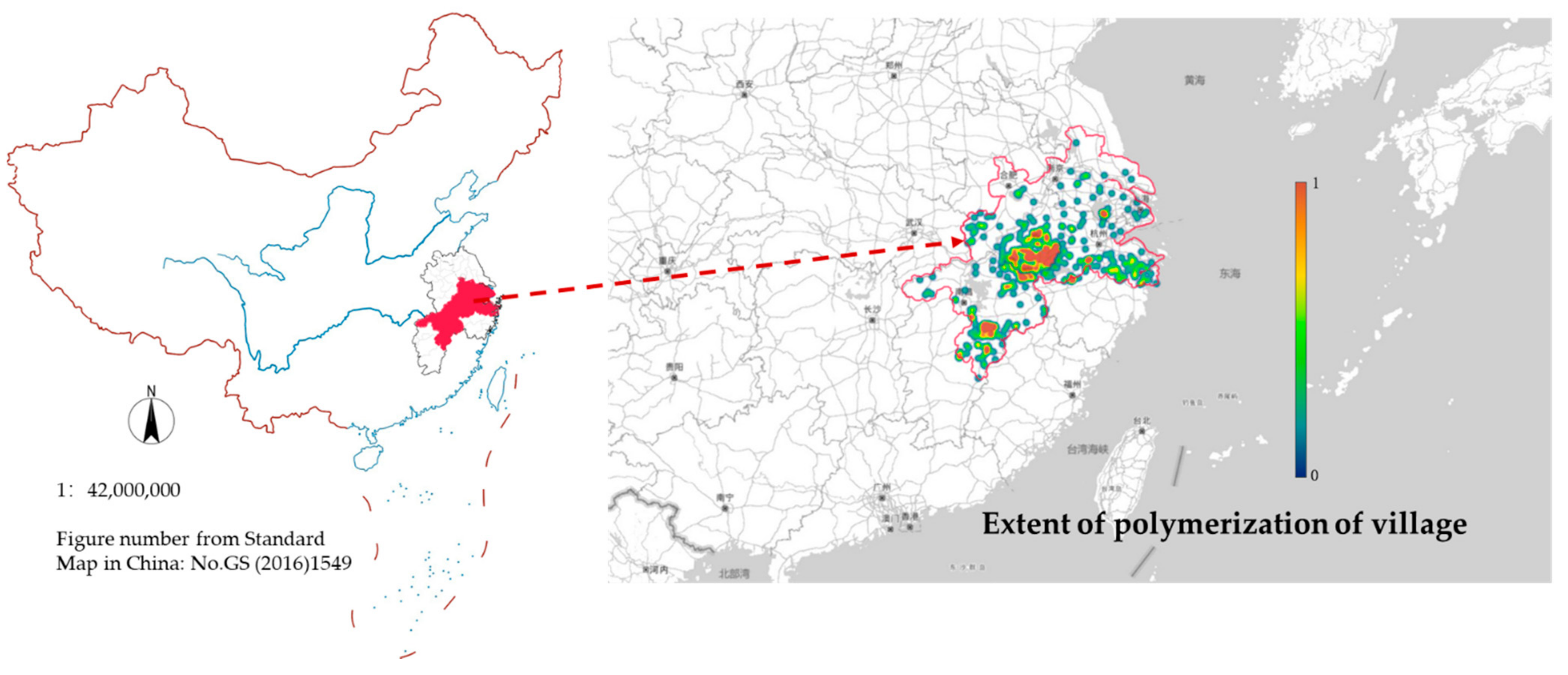


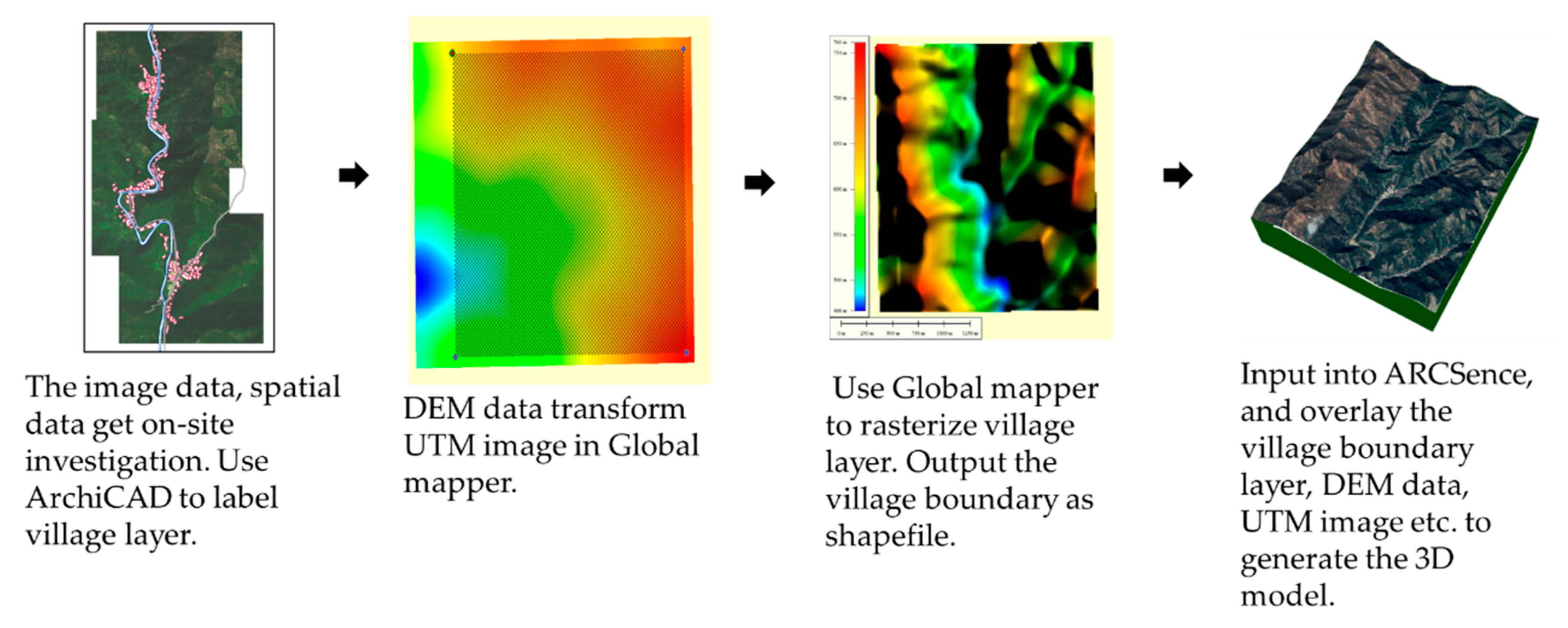
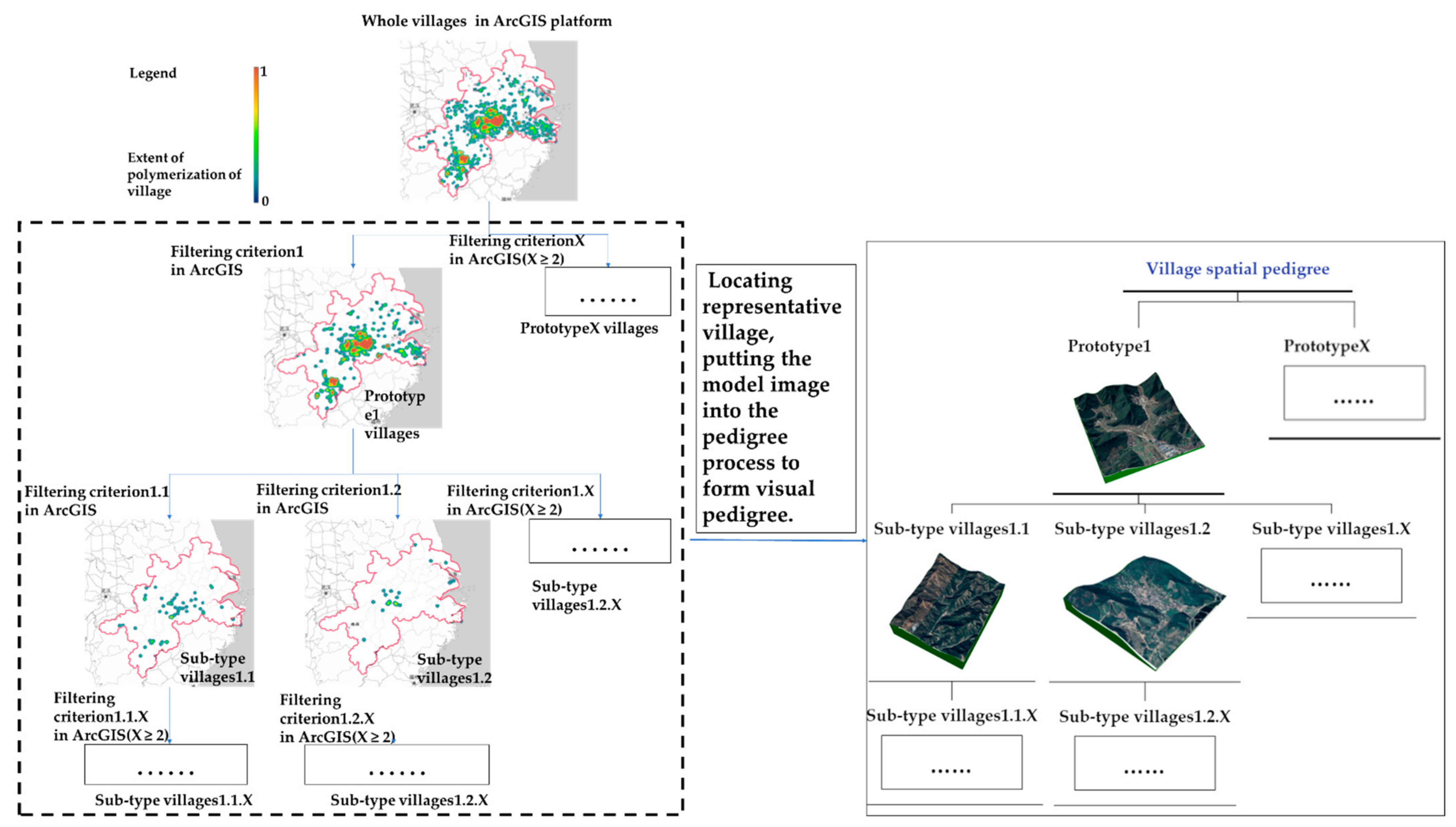
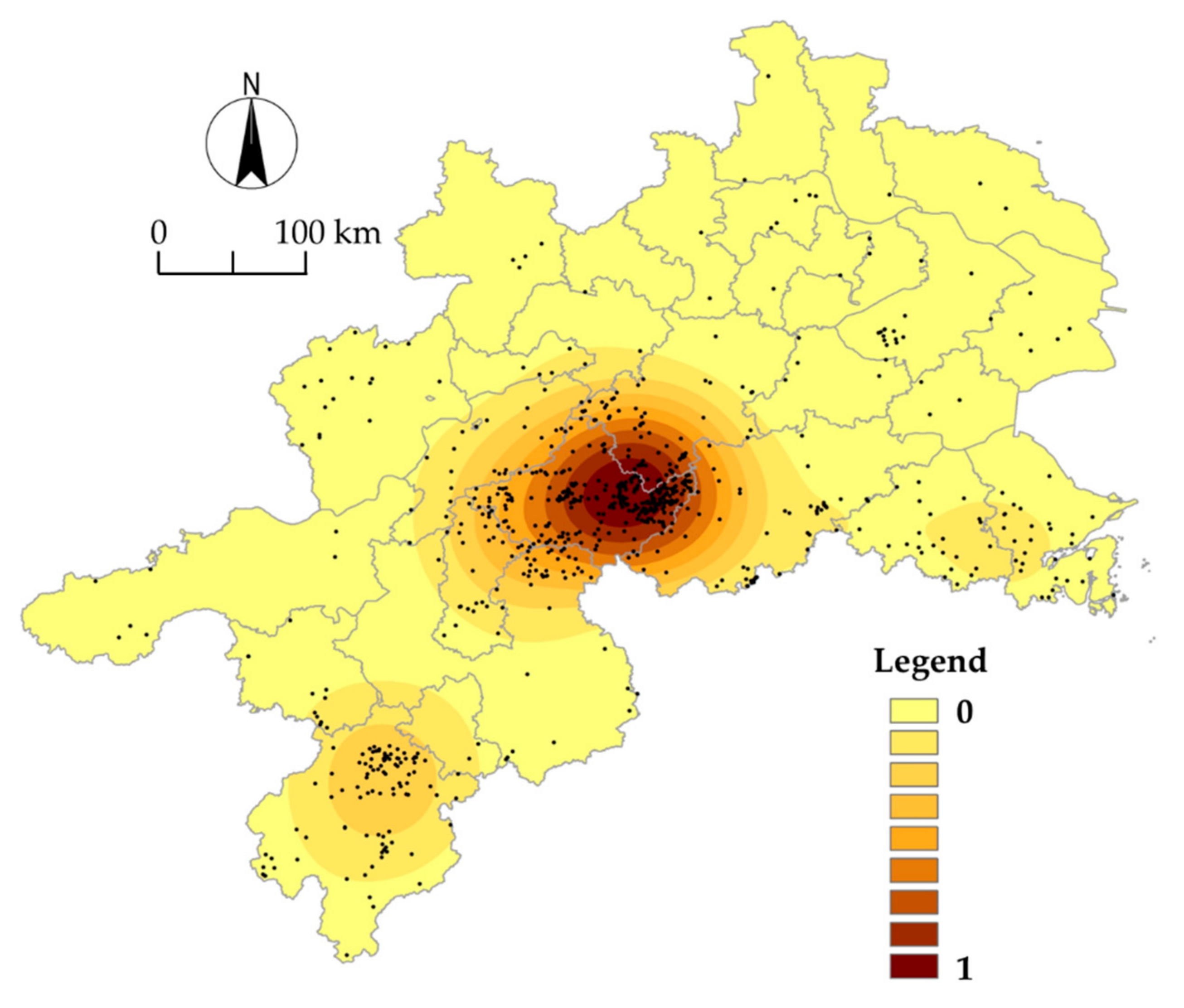


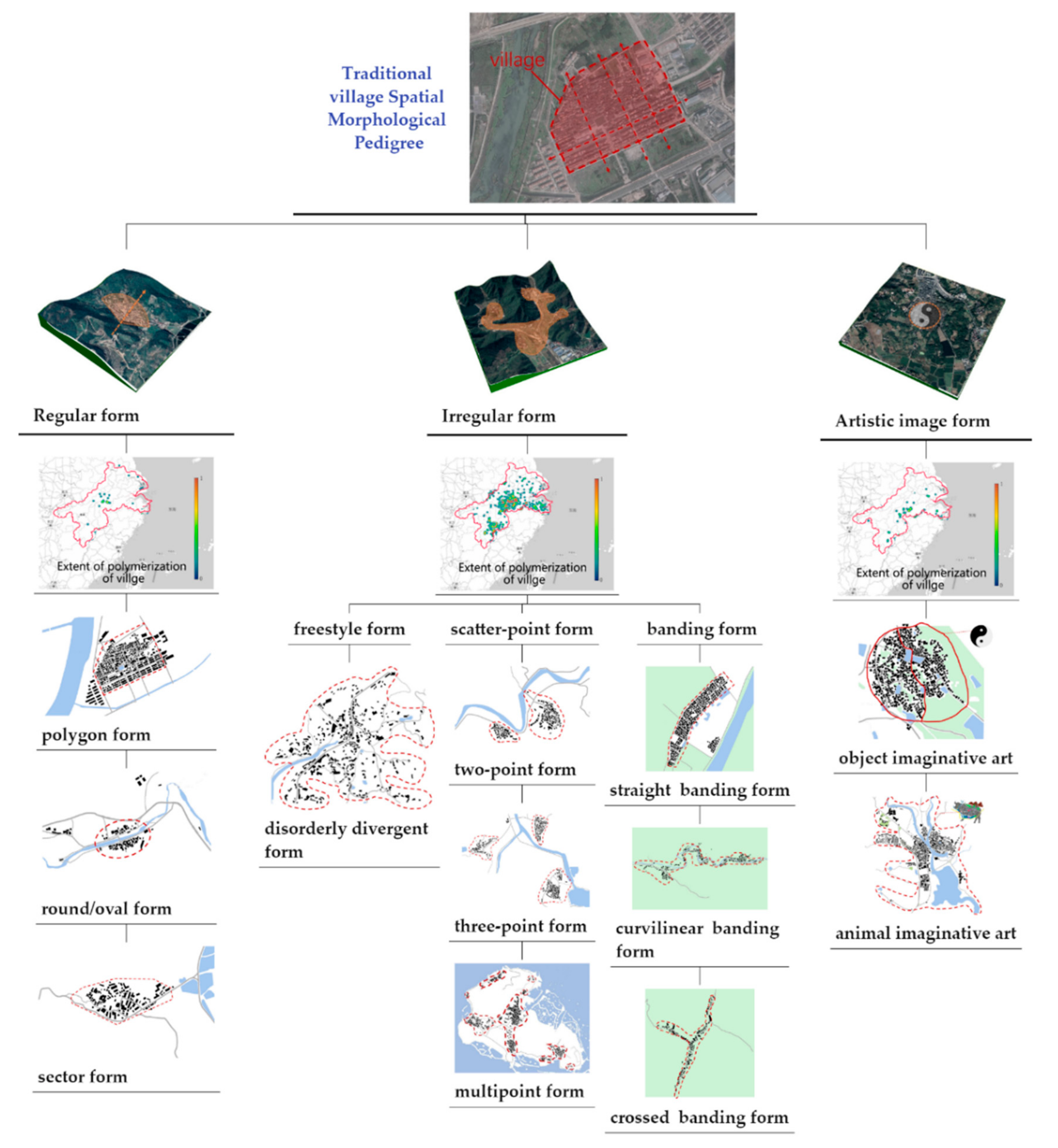
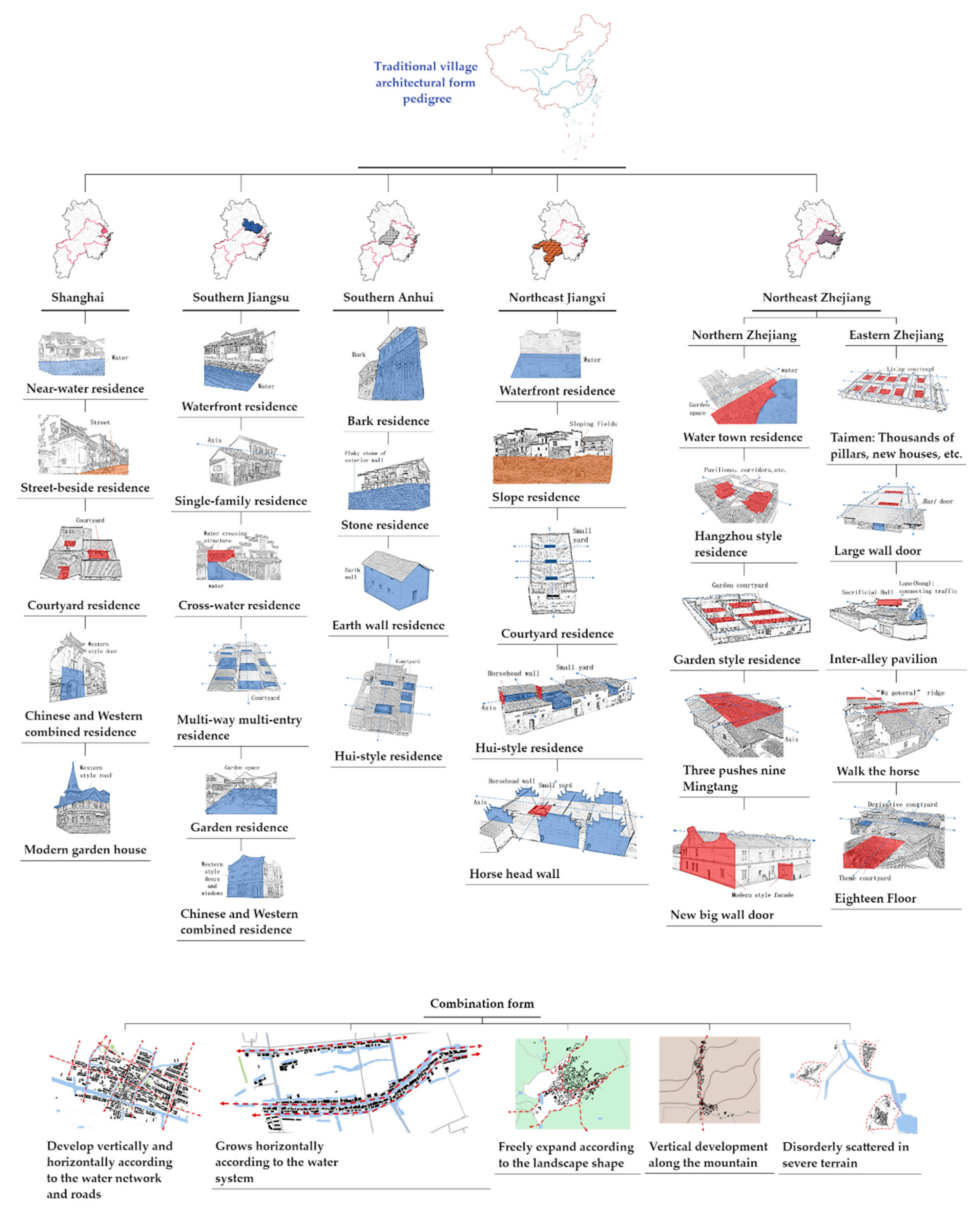

| Qin Chuan Village in Hangzhou City | Landscape | Road System and Architectures | Ancestral Halll |
|---|---|---|---|
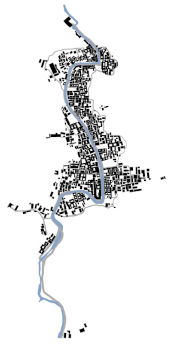 | 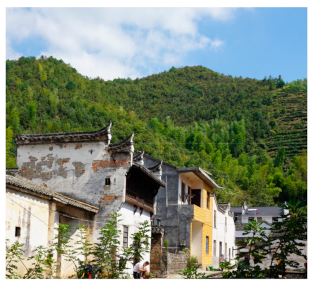 | 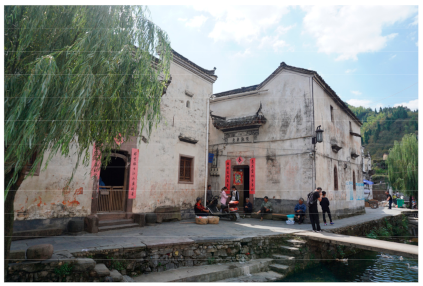 |  |
| The urban regeneration details of conservation for transformation and reuse. | The mountain surrounds the village and is well-conservated, forming a natural ecosystem that provides tea and rice for urban production. | In addition to living, it is also used for traditional architectural and cultural tourism, local specialty sales, etc. | In addition to daily sacrifices, it is used for cultural performances, speeches, reports, and film screenings. |
| Method | Dual-Branch Deep Neural Network | HR-RSF-UV | Pix2Pix Model | On-Site Surveying and Modeling and Labeling in ArchiCAD |
|---|---|---|---|---|
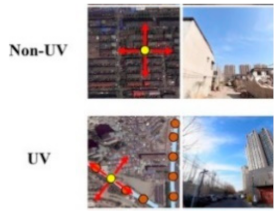 | 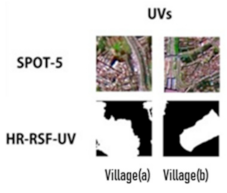 | 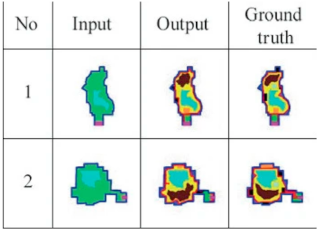 | 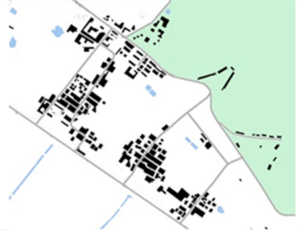 | |
| Features | Model yields a high accuracy of 92.61% in Jing-Jin-Ji region of China. Limited to identifying the difference between urban village (UV) and non-urban village (non-UV); not suitable for isolated and remote areas, such as traditional village. | Can accurately identify the boundaries of urban villages. Fails to provide identification methods for features such as streets and architectures inside the villages; ignores the cross-correlation between multi-source spatial features | Pix2Pix model can generate private garden layout by inputting site plan with certain conditions. Simplified the complex spatial form and is not suitable for larger-scale villages. | Providing 1:1 scale and labeling of village, architecture, landscape, and roads one can recognize clearly. Can input and accurately identify the village space in ArcGIS, and sort out the cross-correlation between multiple villages. |
| Measures | Village Model | Outline Boundary Layer | Road System Layer | River System Layer |
|---|---|---|---|---|
| Obtained description | 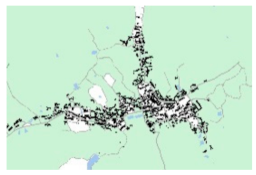 |  | 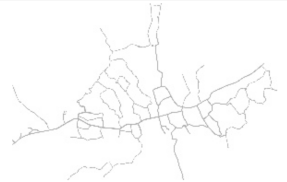 |  |
| On-site mapping and draw in ArchiCAD. | Running village model in ArchiCAD, selecting the outermost building edge of the village through the PEDIT command M, then close the command C (close), the software runs, and the village outline is automatically generated. | Running village model in ArchiCAD, selecting the mapping road layer through command LA (layer). | Running village model in ArchiCAD, selecting the mapping river layer through command LA (layer). |
| Macro Level | Meso Level | Micro Level |
|---|---|---|
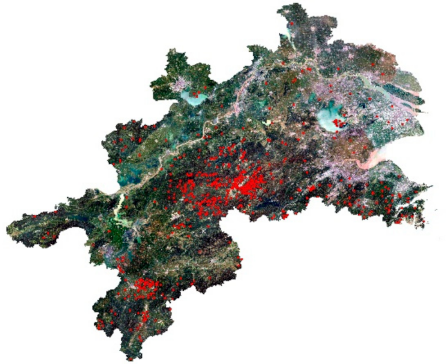 |  | 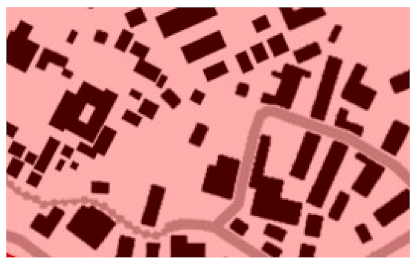 |
| Village represented by a point, including the village’s location, name, distribution data. | Village represented by a spatial layer, including the village‘s outline boundary, river system, road system data. | Village represents a larger area than architecture, including the village’s public space elements, etc. |
| Level | Macro Level | Meso Level | Micro Level | ||
|---|---|---|---|---|---|
| Research Object | Influencing Factors | Pedigree | |||
| Traditional Village Spatial Environment Pedigree | Traditional Village Spatial Organization Pedigree | Traditional Village Spatial Morphological Pedigree | Traditional Village Architectural Form Pedigree | ||
| Criterion 1 | Elevation | Terrain elements | Village architecture group | Village outline boundary style | Area |
| Number of village space unit | |||||
| Criterion 2 | Water system | Water elements | Water system style | Water system style | relationship with water |
| Criterion 3 | Road system | Road elements | Village road style | Village road style | relationship with road |
| Criterion X (X ≥ 3) | Other qualitative factors | _______ | Public space elements are used for village’s daily activities and gathering centers | Feng shui planning principles, local art worship, etc. | Architecture elements |
| Elevation | Water System | Road System |
|---|---|---|
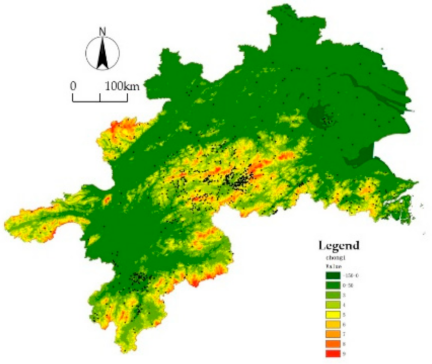 | 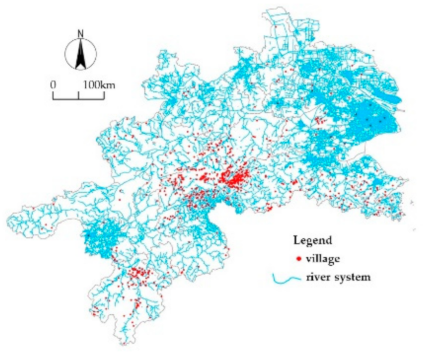 |  |
| Village Name | Qi Ling Village | Yang Wan Village | Shi Chuan Village | Su Village |
|---|---|---|---|---|
| Models | 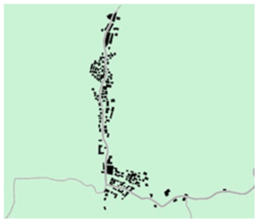 | 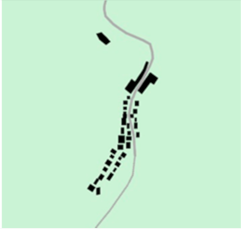 |  | 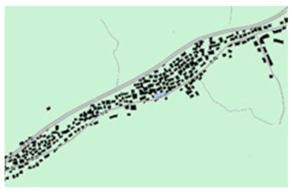 |
| Types | Village Representative | Positive Effect on the Urban |
|---|---|---|
| Diversified industry | 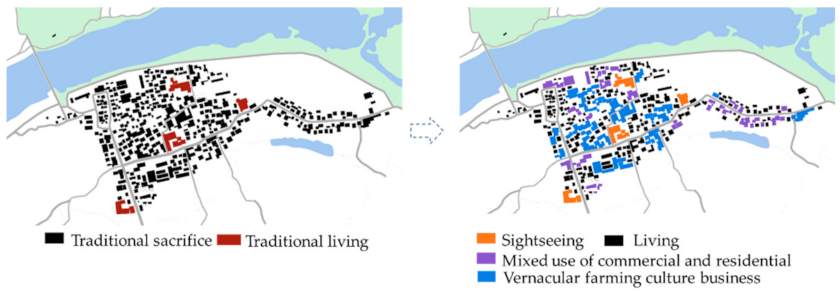 Haikou village in northeastern Jiangxi | Villages provide space for the development of local commodity trade, tourism, cultural creativity, film base and other industries, and form a stable and sustainable regeneration method. These industries have attracted a large number of laborers, promoted local economies, strengthened urban-village material exchanges, and improved the comfort of urban life. |
| Cultural heritage |  Longmen village in northeastern Zhejiang | Villages contain historical and cultural resources, which can provide traditional farming experience, parent-child education and other cultural heritage sites, provide space for urban cultural heritage. |
| Space design innovation | 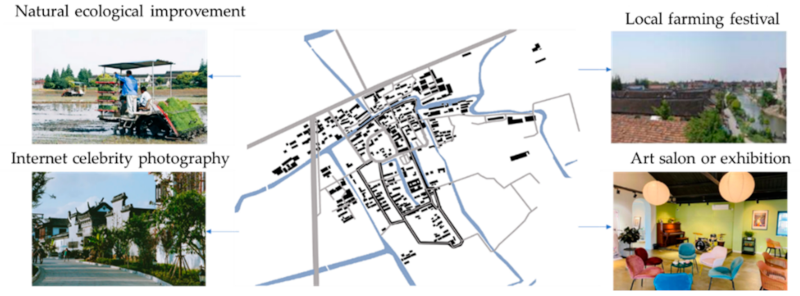 Gexin village in Shanghai | The traditional village art elements and modern urban space learn from each other to form an art creation base and art salon or exhibition area, and inspire the vitality of the urban through different types of creative design activities. |
Publisher’s Note: MDPI stays neutral with regard to jurisdictional claims in published maps and institutional affiliations. |
© 2022 by the authors. Licensee MDPI, Basel, Switzerland. This article is an open access article distributed under the terms and conditions of the Creative Commons Attribution (CC BY) license (https://creativecommons.org/licenses/by/4.0/).
Share and Cite
Liu, X.; Li, Y.; Wu, Y.; Li, C. The Spatial Pedigree in Traditional Villages under the Perspective of Urban Regeneration—Taking 728 Villages in Jiangnan Region, China as Cases. Land 2022, 11, 1561. https://doi.org/10.3390/land11091561
Liu X, Li Y, Wu Y, Li C. The Spatial Pedigree in Traditional Villages under the Perspective of Urban Regeneration—Taking 728 Villages in Jiangnan Region, China as Cases. Land. 2022; 11(9):1561. https://doi.org/10.3390/land11091561
Chicago/Turabian StyleLiu, Xinqu, Yaowu Li, Yongfa Wu, and Chaoran Li. 2022. "The Spatial Pedigree in Traditional Villages under the Perspective of Urban Regeneration—Taking 728 Villages in Jiangnan Region, China as Cases" Land 11, no. 9: 1561. https://doi.org/10.3390/land11091561
APA StyleLiu, X., Li, Y., Wu, Y., & Li, C. (2022). The Spatial Pedigree in Traditional Villages under the Perspective of Urban Regeneration—Taking 728 Villages in Jiangnan Region, China as Cases. Land, 11(9), 1561. https://doi.org/10.3390/land11091561








